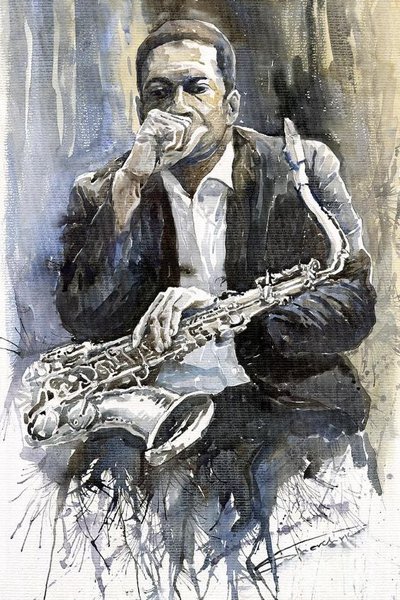John Coltrane and Pharoah Sanders (tenor sax), McCoy Tyner (piano), Jimmy Garrison (bass) and Elvin Jones and Rashied Ali (drums). From the album Meditations (1966).
NOTE
Although the five tracks that make up this album are difficult to listen to, I invite you to at least read the texts, as they contain the biography of John Coltrane, one of the most fundamental musicians in the history of jazz.
John Coltrane was an American saxophonist and composer who played the tenor and soprano saxophone. He participated in bebop, hard bop, modal jazz and free jazz styles. His music acquired an increasingly spiritual meaning and he continues to be one of the most influential saxophonists in the history of music. Although he had a fairly brief professional career, he was one of the most prominent and polemical musician in jazz. Coltrane drastically changed his style throughout his career, which has created confusion in his discography and in the perception of his approach. There is still division between the supporters of his first and more conventional work, and the later, more experimental.

Album cover
At first he played the alto saxophone and in 1945 he enrolled in the Navy, and was assigned to Hawaii, where he played with military bands and graduated in 1946. Then he came back to Philadelphia, where he was born, and played with the Joe Webb Band. In 1947 he toured with the King Kolax Band and changed the alto saxophone for the tenor in the Eddie Vinson Band. In 1948 he was a member of Jimmy Heath’s group and in 1949 he joined Dizzy Gillespie’s big band until 1951. In 1954 he was hired by Johnny Hodges, but later he fired him because of his heroin addiction.

John Coltrane
DISCLAIMER
This composition is atonal and have neither established harmony nor rhythm, that is, each musician plays to his free will. It’s hard music to listen to, so I apologize in advance to those who may dislike it.
In the introduction, Coltrane and Sanders play a repetitive motif while the rest of the group roar freely below in a rampant maelstrom. Next, Coltrane exposes the theme by interpreting another motif that he moves to different tonalities and then comes back briefly to the original motif. At a certain point he begins to make a complex and very intense solo introducing from time to time aberrant sounds without following any type of rule or pattern. He is followed by Sanders whose intervention doesn’t even follow a melodic line. From his instrument only dizzying and strange sounds emerge that increase the confusion that the whole group produces. Then, Coltrane accompanies him underneath with a very similar speech and then he presents a second solo accompanied by Sanders. To finish, they play the motif of the introduction for a while and then slow down.

